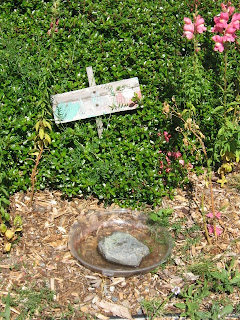
Charles Darwin once wrote that all the good soil on earth has been eaten and excreted by worms at least once. After 25+ years of organic gardening and 12+ years of having a worm bin, I must say that I heartily agree!
Worms are one of nature's most amazing creatures, and most kids can really relate to these non-threatening, tickly wonders. And a worm bin is a great feature to have in a child-friendly garden. The red wiggler worms who inhabit it will turn your leftover fruit and vegetable scraps into the best compost ever seen. And it will require very little work on your part once it's set up and bedded, as the kids will want to do most of the feeding.
You can get a free design from Seattle Tilth for a 2ft x 4ft outdoor worm bin, that you can build with a sheet of plywood and some scrap lumber. Seattle Tilth also has a design for an indoor bin made from plastic Rubbermaid tubs. Check the "More Resources" blog entry for how to contact them.
I recommend using moistened, fallen leaves as the bedding material for outdoor bins, as they are the natural habitat for red wigglers. You can also purchase a "starter set" of red wiggler worms from Tilth or from the Yelm Worm Farm, which will soon begin filling your bin with their hungry little offspring. Check the "More Resources" blog entry for how to contact both sources.
Kids also like to search for worm cocoons and baby worms in the bin, so make sure your bin is easy to access for them, and that it has a safety hook or other device that prevents the lid from being able to shut unexpectedly.







